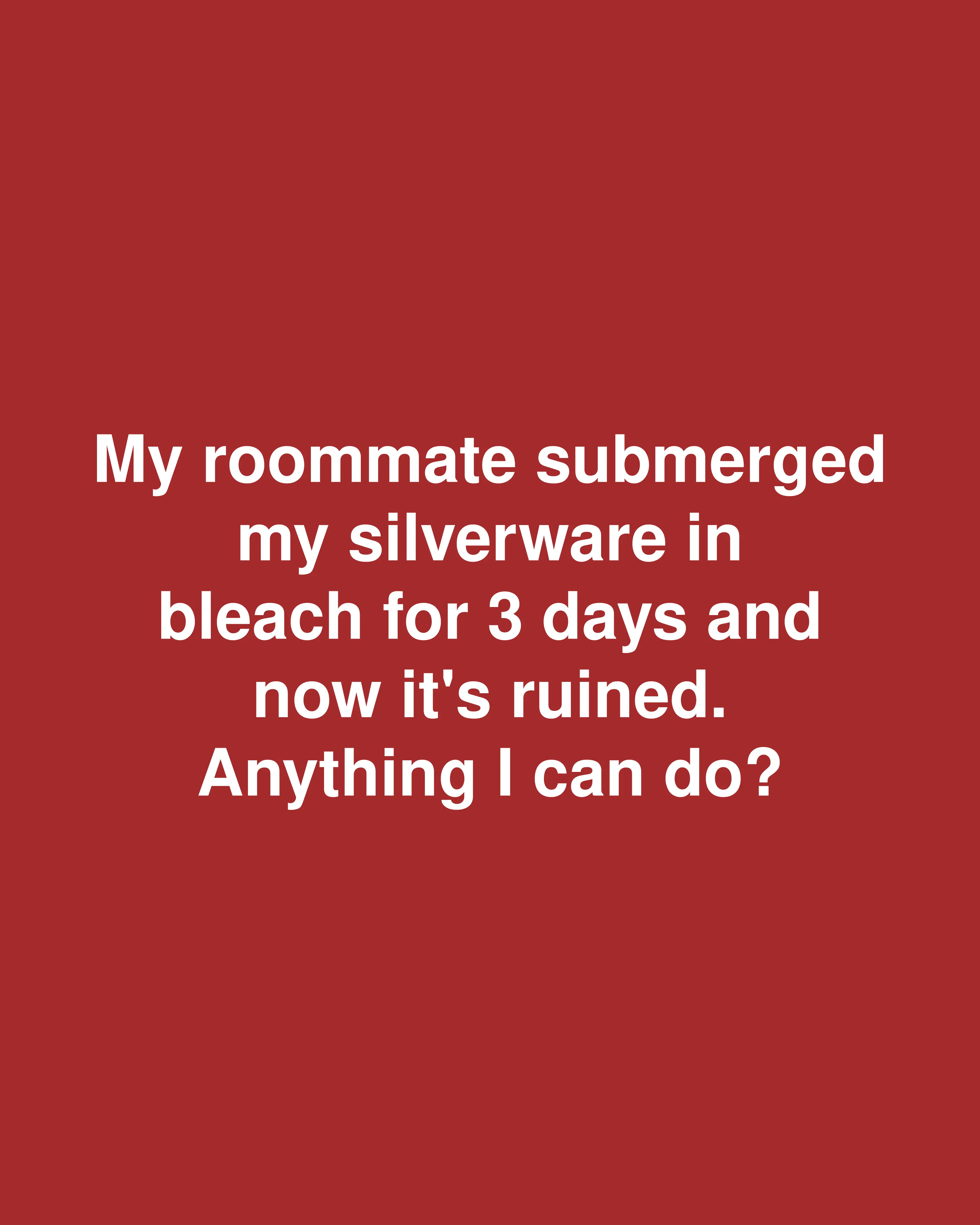Want to save this recipe?
Enter your email below and we’ll send the recipe straight to your inbox!
Help! My Silverware Was Soaked in Bleach for 3 Days
Have you ever experienced that sinking feeling when something valuable gets damaged due to a simple misunderstanding? Imagine discovering your silverware has been sitting in bleach for three entire days. Whether it was an accident, a roommate mishap, or a cleaning experiment gone wrong, this situation can feel both frustrating and overwhelming. The good news? You have options, and with the right approach, you might be able to salvage your cherished utensils.
Understanding What Happens When Silverware Meets Bleach
Bleach is a powerful cleaning agent that works wonders on many surfaces—but metal isn’t one of them. When silverware is exposed to bleach for an extended period, a chemical reaction occurs that can cause serious damage. Bleach contains sodium hypochlorite, which is highly corrosive to metals including stainless steel, silver, and silver-plated items.
This exposure typically results in:
- Black or brown discoloration patches
- Surface pitting and etching
- Rough texture where once smooth
- Weakening of the metal structure
- Permanent damage to any decorative patterns
The severity depends on factors like the concentration of bleach, exposure time, and the type of metal your silverware is made from. Unfortunately, after three days of soaking, some degree of damage is almost inevitable.
Immediate Rescue Steps for Bleach-Damaged Silverware
Step 1: Stop the Chemical Reaction
The moment you discover your silverware in bleach, take immediate action:
- Using rubber gloves, carefully remove each piece from the bleach solution
- Rinse thoroughly under cool running water for at least 2 minutes per item
- Avoid using hot water as it can accelerate chemical reactions
- Pat dry completely with a soft, clean cloth to prevent water spots
Step 2: Assess the Damage Level
Before attempting restoration, carefully examine each piece:
- Mild damage: Light discoloration or minor spots
- Moderate damage: Noticeable discoloration and some rough patches
- Severe damage: Deep pitting, significant color change, or structural compromise
Step 3: Try Home Remedies for Minor to Moderate Damage
For silverware that isn’t severely compromised:
For stainless steel:
- Create a paste using baking soda and water
- Gently rub the paste onto the affected areas with a soft cloth
- Move in the direction of the metal grain
- Rinse thoroughly and dry completely
For silver or silver-plated items:
- Line a bowl with aluminum foil, shiny side up
- Add 1 tablespoon of baking soda and 1 tablespoon of salt
- Pour in hot water until the bowl is filled
- Place silverware in the solution, ensuring each piece touches the foil
- Let sit for 30 minutes to an hour
- Rinse and polish with a soft cloth
Common Mistakes to Avoid When Restoring Bleach-Damaged Silverware
When trying to rescue your silverware, steer clear of these potential pitfalls:
-
Using abrasive cleaners or tools: Steel wool, harsh scrubbing pads, or abrasive powders can cause additional scratching and damage.
-
Applying more chemicals: Adding another strong chemical to counteract bleach often worsens the situation. Stick to gentle, neutralizing solutions.
-
Rushing the process: Patience is key. Aggressive cleaning in an attempt to quickly restore silverware typically results in further damage.
-
Ignoring safety precautions: Always wear gloves when handling recently bleached items or cleaning solutions to protect your skin.
-
Putting damaged silverware in the dishwasher: This can accelerate corrosion on already compromised metal surfaces.
When to Seek Professional Help
Some damage may be beyond DIY fixes. Consider professional restoration services if:
- The silverware has significant sentimental or monetary value
- The items are antiques or part of a valuable collection
- Home remedies haven’t produced satisfactory results
- The damage includes deep pitting or structural issues
Professional silver restorers have specialized tools, solutions, and techniques that can sometimes work miracles on damaged pieces. While this service isn’t cheap, it might be worth the investment for treasured heirlooms.
Preventing Future Accidents
To avoid similar situations in the future:
- Clearly label all cleaning solutions, especially dangerous ones like bleach
- Store silverware and other metals away from cleaning supplies
- Establish cleaning protocols with roommates or family members
- Use designated containers for soaking items rather than the sink
- Set timers when soaking anything to avoid forgetting
Communicating with Your Roommate
If a roommate was involved in the incident, approach the conversation constructively:
- Choose a calm moment to discuss what happened
- Focus on solutions rather than blame
- Share information about metal care to prevent future issues
- Decide together on a fair resolution, which might include replacement costs
- Consider establishing household guidelines for shared items
Quick Recap: Saving Your Bleach-Soaked Silverware
The discovery of silverware soaking in bleach for days is certainly distressing, but taking prompt action can minimize the damage. Rinse thoroughly, try gentle home remedies for minor damage, and know when professional help is needed. While some pieces might be permanently altered, many can be restored to usable condition—even if they bear a few battle scars from their bleach encounter.
Remember that prevention is always better than restoration. Clear communication about household cleaning practices and proper storage of both cleaning supplies and valuable items will help ensure your silverware stays safely out of harm’s way in the future.
Frequently Asked Questions
Is it safe to eat with silverware that was soaked in bleach?
After thorough rinsing and cleaning, silverware that doesn’t have structural damage is generally safe to use. However, if there’s severe pitting or flaking metal, those pieces should be replaced as they can harbor bacteria and may shed metal particles.
Can silver plating be restored after bleach damage?
Minor damage to silver plating might be improved with home remedies, but significant bleach exposure often strips the plating permanently. Professional re-plating is possible but can be costly—sometimes more than replacement.
Will my homeowner’s or renter’s insurance cover bleach-damaged silverware?
Some policies might cover accidental damage to personal property, but many have deductibles that exceed the replacement cost of standard silverware. For valuable silverware sets or heirlooms, check your policy or contact your insurance agent directly.
How can I tell if my “stainless steel” silverware is actually silver-plated?
Check for markings like “EP” (electroplated), “EPNS” (electroplated nickel silver), or “Silver on Copper.” Pure stainless steel typically has markings like “18/10” or “18/0” indicating chromium and nickel content. Silver-plated items often show more dramatic damage from bleach exposure.


